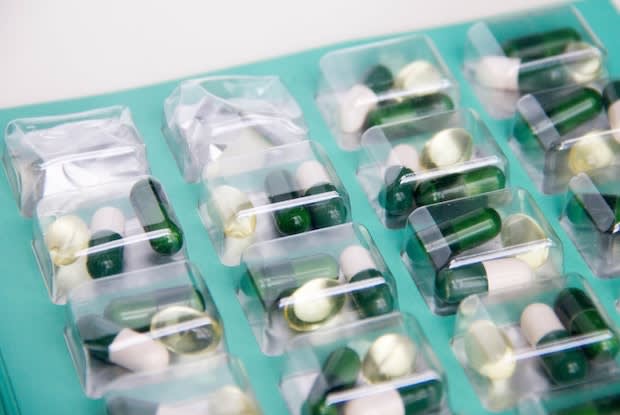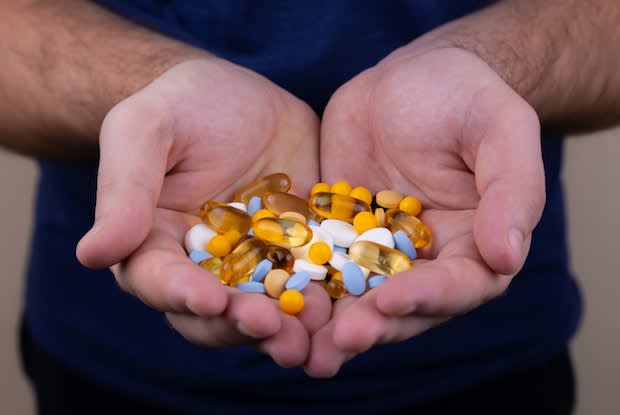Table of Contents
a. Why are generic drugs cheaper?
b. Why do generic drugs look different?
c. How are generic drugs approved?
III. Generic vs. brand-name drugs: important differences
IV. Minor differences between generic and brand-name drugs
V. Are adverse reactions caused by generic medication possible?
Pharmaceutical drugs in America are among the most expensive in the world. So it’s no wonder that millions of Americans choose to buy generic medication, as it is typically cheaper than brand-name medication. Additionally, many Americans rely on generous insurance plans and ordering medication online from licensed Canadian pharmacy referral services like Canada Med Pharmacy to get the treatment they require.
If you ask your doctor, they will say that there is no difference between generic and brand-name drugs, except perhaps the price. But is this true?
Let’s dive into the details.
What are brand-name drugs?
Brand-name drugs are medications developed, marketed, and sold by major companies that usually hold a patent for their newly-invented drug. For example, drug company Pfizer produced ibuprofen, which they brand-named Advil®.
Producing a drug requires a large amount of research, time, and money. Major pharmaceutical company Eli Lilly claims that the cost of developing a new medicine is $2.6 billion on average and that this process takes an average of 10 years. [1]

Because brands hold a patent for their drug for a limited time, you may have known some medications only by their brand names. Common over-the-counter brand-name medications include TYLENOL®, Pepto-Bismol®, and Robitussin®. Common prescription drug brand names include JARDIANCE®, VIAGRA®, and ADVAIR®.
What are generic drugs?
Generic drugs use the same active ingredients as brand-name ones and work the same way, so they have the same risks and benefits as brand-name drugs.
Giving a company the exclusive right to market and sell that drug under a brand name helps the company recoup its costs. Being the sole producer allows the company to set its own prices and profit from the sale. This is what a drug patent grants.
This exclusivity, however, does not last forever. According to the FDA, anyone can make the drug once a drug patent expires. When the drug patent for Advil® ended, multiple companies began to produce and sell ibuprofen, also known as the generic version of Advil®. [2]
a. Why are generic drugs cheaper?
Firstly, generic drugs are cheaper because the companies producing them do not have to repeat animal and human studies that the original company did to get their drug approved. In other words, companies that manufacture the generic drug can bypass much of the up-front research costs associated with making a brand new drug.
Multiple companies making the same generic drug also promotes market competition and a significant reduction in pricing. The most significant drop in pricing occurs when a second company produces the generic drug. The pricing may continue to drop, giving patients cheaper drugs as time goes on. [3]
b. Why do generic drugs look different?
Because of trademark laws, generic drugs cannot look exactly like other medications. As long as the safety and efficacy of a drug remains the same, a generic drug is allowed to appear in a different color or to produce a different flavor. [4]
c. How are generic drugs approved?
According to the FDA, cheap generic drugs are only allowed to be sold after a rigorous approval process. Some requirements include:
- Pharmaceutical equivalence
- Correct and consistent manufacturing
- An identical and correct amount of the active ingredient
- Safe inactive ingredients
- A reasonable deterioration time
- An appropriate container with the same label as the original drug
- Expired patents and legal exclusivities associated with the brand-name drug [5]

Generic vs. Brand Name Drugs: Important Differences
Summing up, here are the main differences between the two types of medication:
a. Price
Companies can bypass up-front research costs to produce generic drugs, lowering their prices. Multiple competing companies manufacturing the same generic drug also creates market competition, lowering prices even further.
b. Appearance
Due to trademark laws, generic drugs may appear in different colors or flavors than their original counterparts.
c. Availability
Not every brand-name drug has a generic equivalent. If a patent has not expired, there will be no generics available. Additionally, generic versions can be available quicker in other countries. For example, generic ADVAIR® was available in Canada earlier than the United States.
Minor Differences between Generic and Brand-Name Drugs
Despite their similar operation, generic drugs will always be slightly different from their brand-name equivalents the same way one batch of brand-name drugs is different from another batch. This difference in natural variability is not medically significant, and the FDA sets rules on how much variation is allowed. [6]
Are adverse reactions caused by generic medication possible?
Because the FDA monitors generic medication so vigilantly, you can probably conclude that adverse reactions are rare. However, it is possible to experience an adverse reaction to the inactive ingredients of a generic pharmaceutical. This is because this component isn’t required to be identical to the fillers used in the brand-name version.
For example, a patient experienced an allergic reaction to a generic drug ingredient in 2010. Yet, for the vast majority of patients, substituting a brand-name drug for a generic one is unlikely to pose problems. [7]
“The studies in our sample concluded that generic and brand-name cardiovascular drugs are similar in nearly all clinical outcomes. Among WTI drugs, the best evidence for clinical equivalence emerged from high-quality prospective RCTs in patients with cardiovascular disease involving β-blockers, calcium channel blockers, and statins.” [8]
Save Money, Buy Generic
Some things aren’t worth buying the brand-name version of. You don’t necessarily need brand-name pasta or brand-name flour. The same can be said of medicine! Use the money you save to buy that cheese from your favorite brand instead.
A generic medication can be up to 80-85% cheaper than original brand-name medication. [9] Next time you’re at the pharmacy, pick up the generic version and save a few bucks. Or visit Canada Med Pharmacy, a Canadian pharmacy referral service to choose either brand-name or generic medication available at significantly lower prices.
DISCLAIMER: The content in this article is intended for informational purposes only. This website does not provide medical advice. In all circumstances, you should always seek the advice of your physician and/or other qualified health professionals(s) for drug, medical condition, or treatment advice. The content provided on this website is not a substitute for professional medical advice, diagnosis or treatment.
